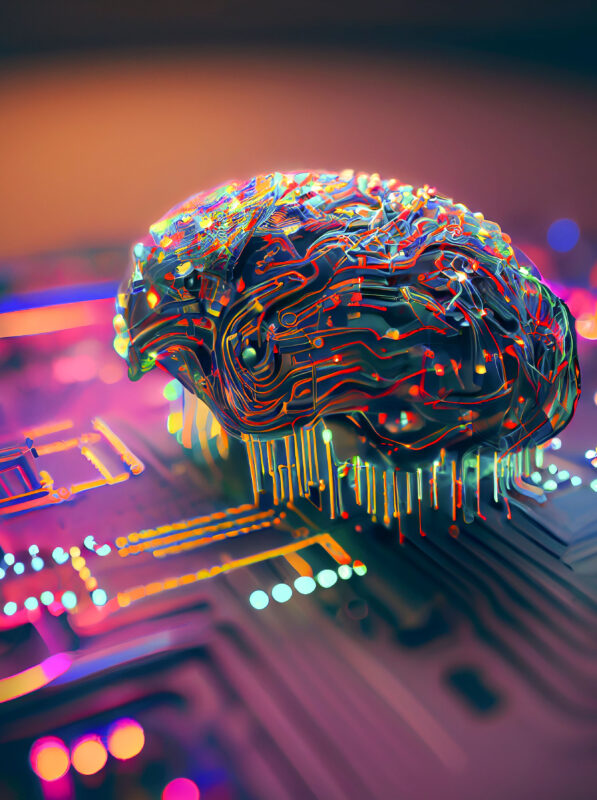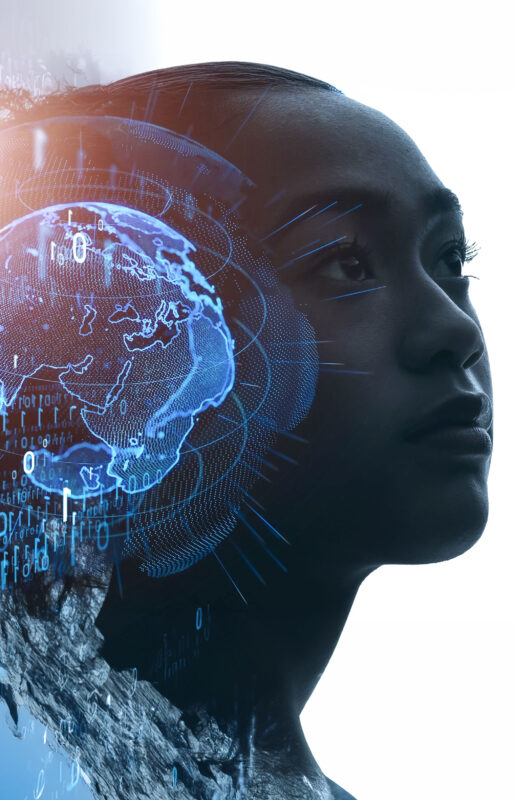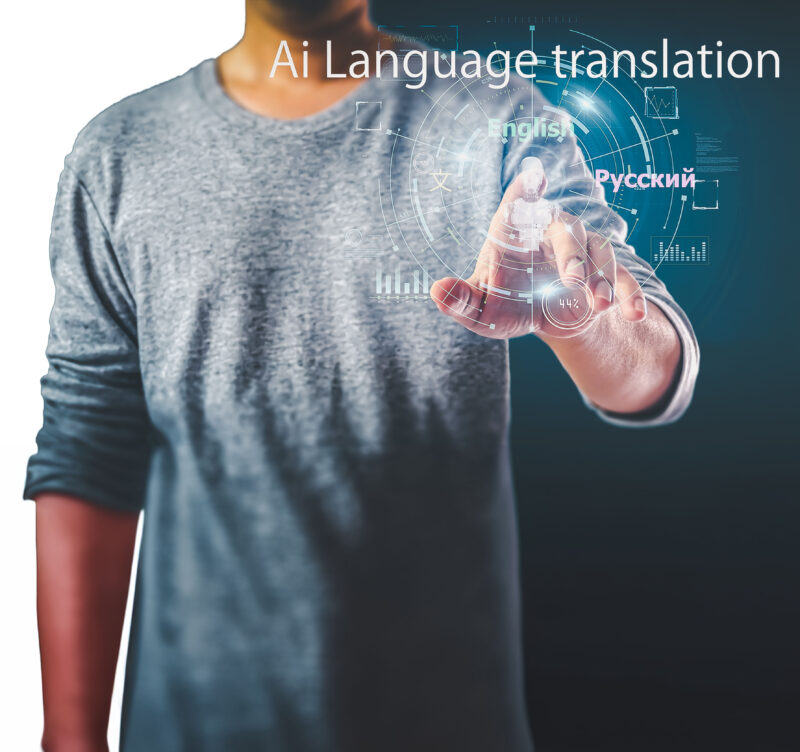
Artificial Intelligence


Discover the intricacies of Machine Translation (MT) through our detailed FAQ section. Explore how algorithms translate languages, the roles of different MT systems like Statistical Machine Translation (SMT) and Neural Machine Translation (NMT), and why human review is crucial for accuracy, cultural nuances, and domain-specific knowledge. Dive into MediaLocate‘s FAQs to enhance your understanding of MT’s capabilities and limitations.
Q: How does Machine Translation work?
Machine Translation (MT) automatically translates text or speech from one language to another using computer algorithms. The process typically relies on a set of training data 0or corpus to be more accurate in its translations.
It’s important to note that while MT has made significant advancements, it may still face challenges in handling idiomatic expressions, cultural nuances, and domain-specific terminology. This is why glossaries or term databases can greatly improve the accuracy of machine translations. Additionally, the quality of translation can vary based on the language pair and the complexity of the content being translated. Users often need to consider these factors when evaluating the suitability of MT for specific tasks.
Q: What are the main types of Machine Translation systems?
There are several approaches to Machine Translation, one common method being statistical machine translation (SMT), and another more recent and advanced approach is neural machine translation (NMT).
Statistical Machine Translation (SMT):
Neural Machine Translation (NMT):
Q: How accurate is Machine Translation compared to human translation?
 The accuracy of Machine Translation (MT) compared to human translation can vary depending on several factors, including the language pair, the complexity of the text, and the quality of the MT system. Here are some key considerations:
The accuracy of Machine Translation (MT) compared to human translation can vary depending on several factors, including the language pair, the complexity of the text, and the quality of the MT system. Here are some key considerations:
General Content: For general and straightforward content, especially in commonly translated languages, MT systems, particularly neural machine translation (NMT), can provide relatively accurate translations.
Complex or Specialized Content: Accuracy tends to decrease when translating complex or specialized content, such as legal or technical documents, where domain-specific terminology and nuances play a crucial role. Human translators are often better equipped to handle these challenges.
Idiomatic Expressions and Cultural Nuances: MT systems may struggle with idiomatic expressions, cultural nuances, and context-dependent meanings. Human translators are better at understanding and conveying these subtleties.
Ambiguity: Ambiguous sentences or words with multiple meanings can challenge MT systems. Humans can use contextual knowledge to resolve ambiguities, while MT may struggle.
Language Pair: The accuracy of MT can vary significantly based on the language pair. Some language pairs have well-established training data, resulting in more accurate translations, while others may lack sufficient resources for training, leading to lower accuracy.
Continuous Improvement: State-of-the-art MT models, especially those using neural networks, are often continuously updated and improved. Regular updates can lead to enhanced translation quality over time.
In summary, while MT has made significant strides and is suitable for specific applications, it may not fully replace human translators, especially in scenarios that require a deep understanding of context, cultural nuances, and specialized knowledge. The level of accuracy achieved by MT is continually improving, and it is often used as a valuable tool in conjunction with human translation to enhance efficiency and productivity.
Q: Why is there still a need for a human reviewer?
Even though Machine Translation (MT) has advanced significantly, there are several reasons why a human reviewer, often a professional translator, is still essential when using MT:
Contextual Understanding: Human reviewers deeply understand cultural nuances, idiomatic expressions, and context, allowing them to interpret and convey meanings accurately. MT systems may struggle with contextual understanding.
Domain-Specific Knowledge: In specialized fields like legal, medical, or technical translation, human reviewers possess domain-specific knowledge that MT systems may lack. This expertise is crucial for accurate and precise translations.
Quality Assurance: Human reviewers ensure the overall quality of the translation by checking for errors, inconsistencies, and linguistic nuances that an MT system might miss. They can refine the output to meet the desired standards.
Creative and Stylistic Elements: Translators add a creative and stylistic touch to the translations, ensuring that the output reads naturally and maintains the intended tone. MT systems might produce literal translations that lack this finesse.
Handling Ambiguities: When faced with ambiguous words or phrases, human reviewers can use their judgment, experience, and knowledge to choose the most appropriate interpretation. MT systems may struggle with ambiguity.
Post-Editing: Many professional translation workflows involve post-editing of MT output. Human reviewers can enhance and refine the machine-generated translation to ensure accuracy and fluency.
Cultural Sensitivity: Translators understand the cultural implications of language and can ensure that translations are culturally sensitive. This is crucial for avoiding misunderstandings or offense in specific contexts.
Customization for Specific Needs: Organizations often have specific terminology or style preferences unique to their industry or brand. Human reviewers can tailor translations to meet these particular needs.
Reviewing Format and Layout: In some instances, especially with complex document formats, human reviewers must ensure that the translated content maintains the correct format, layout, and structure.
Handling Uncommon Language Pairs: For less common language pairs, where training data for MT systems may be limited, human translators become indispensable for accurate and reliable translations.
Human reviewers ensure translations’ accuracy, fluency, and appropriateness. While MT systems can expedite the translation process, their output often benefits from the expertise and nuanced understanding that human translators bring. Combining machine assistance and human review is a common and practical approach in professional translation workflows.
Q: Can Machine Translation handle different languages equally well?
The performance of Machine Translation (MT) systems can vary significantly depending on the language pair involved. Some language pairs are well-supported and have abundant training data, resulting in more accurate translations, while others may present challenges due to limited linguistic resources. One of the key factors that affects this is resource availability. Languages with ample parallel corpora (bilingual texts) available for training MT models tend to perform better. Commonly spoken languages often have more resources, leading to improved accuracy. In addition, languages with complex grammar structures, extensive vocabularies, or unique linguistic features may pose challenges for MT systems. MT may better handle simplified languages.
In other words, while MT systems can perform very well for some language pairs, their performance is not uniform across all language pairs. It is crucial to consider the specific characteristics of the languages involved and the need to employ additional strategies, such as human review or customization, to achieve optimal results, especially for languages with unique linguistic features or limited available resources.
 Q: Are there specific industries or content types where Machine Translation is more effective?
Q: Are there specific industries or content types where Machine Translation is more effective?
Yes, Machine Translation (MT) can be more effective in specific industries or content types where the content’s characteristics align well with MT systems’ capabilities. Here are some industries and content types where MT is commonly employed with success:
E-commerce and Retail: MT is often used to translate product descriptions, customer reviews, and other content on e-commerce platforms. It enables retailers to expand their reach to global markets quickly.
Travel and Tourism: Translation of travel-related content, such as hotel descriptions, travel guides, and booking information, benefits from MT. It facilitates communication with international travelers.
News and Media: MT quickly translates news articles, press releases, and other media content for broader distribution. Speed is often crucial in disseminating news globally.
User-Generated Content: Platforms that host user-generated content, such as social media, forums, and community websites, use MT to enable communication between users speaking different languages.
Technical Documentation: MT can translate technical documentation, manuals, and product specifications effectively. However, human review is often necessary to ensure accuracy in specialized terminology.
Internal Business Communication: Companies with a global presence use MT for internal communication, especially for disseminating information, policies, and updates across diverse language-speaking teams.
Customer Support: MT translates customer support inquiries and responses, allowing businesses to provide multilingual support more efficiently. However, human review is crucial for maintaining quality.
Multilingual Content Localization: MT is a key component in the process of localizing software interfaces, websites, and applications for different language markets. It accelerates the localization process.
Government and Diplomacy: MT aids in translating diplomatic documents, official communications, and government publications. It facilitates communication between nations and international organizations.
E-learning and Training Materials: MT is used to translate educational content, training materials, and e-learning modules. It helps make educational resources accessible to a global audience.
Legal Documents (with Caution): While legal translations often require high accuracy, MT can be used as a preliminary step to understand the content quickly. However, legal translations typically benefit from thorough human review.
It’s important to note that while MT is effective in these contexts, human review is often recommended, especially for critical content, to ensure accuracy and address nuances that MT systems may not capture perfectly. Additionally, MT continually improves, and its applications may expand to new industries and content types over time.
Q: What role do ChatGPT and other LLMs play in improving translation quality?
Large Language Models (LLMs) like ChatGPT can improve translation quality in several ways. AI tools can implement automated actions to provide checks even on human translations. Automated QA checks and back translations are tools that are available using different LLMs.
AI tools can provide more automated checks to ensure the quality of translations and augment the usual translation process to help create efficiencies and cost savings.
Q: How can I integrate Machine Translation into my workflow or applications?
After identifying the appropriate machine-translation engine, it can be integrated into a workflow as part of any advanced translation management system (TMS). After the engine’s output is available, a human post editor should always edit and check the content for accuracy.
While using a TMS, you can also ensure cost savings via translation memories and the reuse of previous translations and post-edited content. It is essential to keep a well-organized database of the edited machine-translated content to use the corrections provided by human linguists to improve the quality and output of the MT engine. It is possible to begin using machine translation without and glossary or training material. However, it is highly recommended that, at the very least, a database of terms is provided as it dramatically helps to improve the accuracy of most machine translation engines.
Properly setting up and organizing resources and content can replace most traditional Translation and Editing workflows with a single post-editing step. How much time and effort can be saved will always greatly depend on the quality of the machine-translation output.
Q: Are there privacy and security concerns when using Machine Translation services?
Privacy and security concerns are associated with using Machine Translation (MT) services, mainly when sensitive or confidential information is involved. Some of the main concerns include:
Data Privacy: MT services may require users to upload text or documents to their servers for translation. The service provider could access or store sensitive information in these documents, potentially leading to data privacy breaches.
Data Security: Transmitting sensitive data to MT servers for translation raises concerns about data security. There’s a risk of interception or unauthorized access to the data during transmission or stored on the service provider’s servers.
Confidentiality: MT services may not adequately safeguard the confidentiality of translated content. There’s a possibility that unauthorized individuals, including service provider employees, could access or view translated documents, compromising confidentiality.
Data Ownership: Users may lose control over the ownership and usage rights of their translated content when using MT services. Service providers may retain rights to use translated data for their own purposes, such as improving their algorithms or offering additional services.
Compliance and Regulations: Organizations subject to data protection regulations, such as GDPR in Europe or HIPAA in the United States, must ensure their MT services comply with applicable regulations. Failure to do so could result in legal consequences and penalties.
Quality Control: The quality of machine-translated content may not meet the standards required for certain industries or applications. Poorly translated content could lead to misunderstandings, reputational damage, or legal liabilities.
To mitigate these concerns, organizations should:
Organizations can minimize MT services’ privacy and security risks and protect sensitive information by taking these precautions.
Q: What are the key factors when selecting a Machine Translation solution for my needs?
When selecting a Machine Translation (MT) solution for your needs, you must consider several key factors to ensure it aligns with your requirements and goals. Here are some key factors to consider:
Accuracy and Quality: Assess the accuracy and quality of translations the MT solution produces. Look for solutions that offer high-quality translations for your language pairs and content types.
Language Coverage: Determine if the MT solution supports your required language pairs. Consider common and less common languages that may be relevant to your needs.
Customization and Adaptability: Evaluate the ability to customize and adapt the MT solution to your specific domain, terminology, and style preferences. Look for solutions that allow for fine-tuning and customization to improve translation quality.
Integration Capabilities: Consider how easily the MT solution can integrate with your existing workflow, content management systems, and applications. Seamless integration can streamline the translation process and improve efficiency.
Scalability: Assess the scalability of the MT solution to accommodate your translation volume and growth requirements. Ensure that the solution can handle increasing volumes of content without compromising performance or quality.
Security and Privacy: Evaluate the security and privacy measures implemented by the MT solution provider to protect your data and ensure confidentiality. Look for solutions that comply with relevant data protection regulations and industry standards.
Cost and Pricing Structure: Consider the cost and pricing structure of the MT solution, including upfront costs, subscription fees, and any additional charges for usage or customization. Compare pricing options and choose a solution that offers the best value for your budget.
Support and Training: Assess the MT solution provider’s support and training level. Look for solutions that offer comprehensive support, training resources, and access to knowledgeable support staff to help you maximize the solution’s benefits.
User Experience: Consider the usability and user experience of the MT solution, including the interface design, ease of use, and availability of features. Choose a solution that is intuitive and user-friendly for both translators and end-users.
Feedback and Reviews: Seek feedback and reviews from other users and industry experts who have experience with the MT solution. Consider their experiences and insights to inform your decision-making process.
By carefully considering these key factors, you can select an MT solution that meets your translation needs, aligns with your goals, and delivers high-quality translations efficiently and effectively.
Q: What is the difference between Translation and Post Editing?
In translation, a human is the primary creator of the target text, while in post-editing of machine translation (PEMT), a human revises (or “post-edits”) the output of a machine translation (MT) engine. PEMT leverages MT for quicker initial results, allowing the post-editors to focus on correcting and refining the target text. Traditional translators need deep linguistic and cultural knowledge. Post-editors need the same skills but must be adept at working with MT outputs, which includes understanding MT’s limitations and common error patterns.